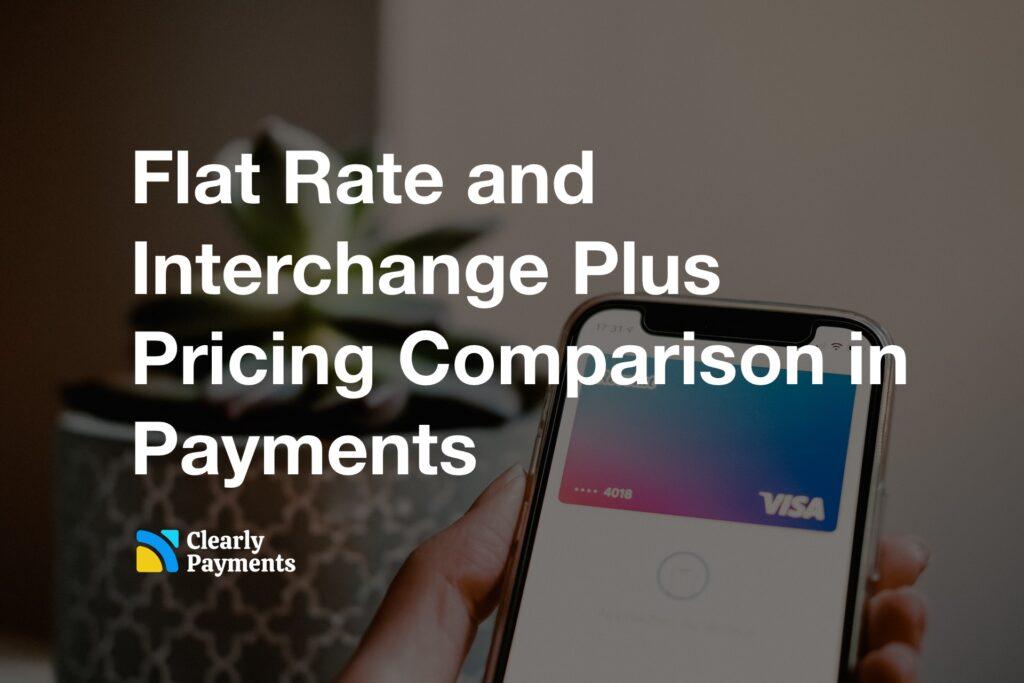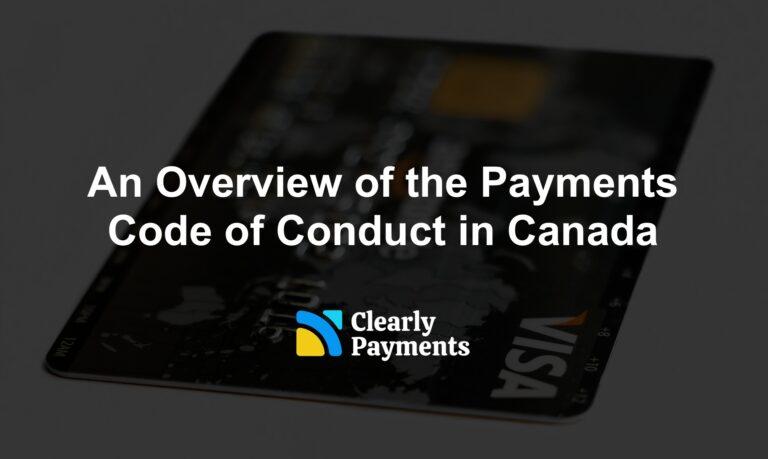In the world of payment processing, merchants are often confronted with a crucial decision: which pricing model should they adopt?
Among the various pricing options available in payments, two stand out as the most popular and widely used: flat rate pricing and interchange plus pricing, also known as cost plus pricing.
Each of these models has its merits and considerations, and understanding the nuances between them is essential for businesses aiming to optimize their payment processing strategies.
What is Flat Rate Pricing in Payments?
Flat rate pricing simplifies the credit card processing cost structure by offering merchants a fixed percentage fee and a set transaction fee for each transaction processed. This pricing model is renowned for its predictability, often featuring rates like 2.9% and $0.30 per transaction.
With flat rate pricing, the type of credit card used by customers does not affect the cost to the merchant. Credit cards are categorized by their interchange fees, which represent the fees charged by banks and passed on to merchants. Under flat fee pricing, these differences in interchange fees are essentially smoothed out, providing a sense of simplicity and ease in understanding pricing.
While flat rate pricing offers a straightforward approach to payment processing costs, it’s essential to note that simplicity comes at a price. Generally, merchants on flat fee pricing may experience higher fees compared to interchange plus pricing, especially when dealing with an average transaction size above a certain threshold. The only scenario where flat fee pricing often proves more cost-effective is when dealing with small transactions, such as those found in quick-service stores, typically less than $5 per transaction.
What is Interchange Plus Pricing in Payments
Interchange plus pricing goes deeper into the intricacies of credit card fees by considering the underlying cost known as the interchange fee. Different types of credit cards come with varying interchange fees; for example, high-end credit cards may have significantly higher interchange fees compared to basic ones.
In an interchange plus pricing model, the fee charged to the merchant varies depending on the type of credit card used by the customer. However, what remains consistent is the markup applied to each transaction. This pricing structure empowers merchants to optimize their costs, as they pay lower fees for transactions involving basic credit cards and higher fees when processing high-end cards.
Understanding that the majority of credit card transactions in North America involve basic cards with lower interchange rates is crucial. This means that, for most businesses, the potential to benefit from lower fees is significant.
Pros and Cons of Interchange Plus and Flat Rate
Here we explore the pros and cons of Interchange Plus and Flat Rate pricing models in payment processing. By looking at the strengths and weaknesses of each approach, you’ll gain a clearer perspective on how these models align with your specific business needs and financial goals.
Whether you’re seeking predictability or flexibility, cost optimization or simplicity, understanding these key aspects will empower you to make an informed choice for your payment processing strategy.
Flat Rate Pricing
Pros:
- Predictable and straightforward pricing.
- No need to worry about varying interchange rates.
- Ideal for businesses with low revenue that need simplicity.
Cons:
- Generally more expensive for businesses with higher revenue (above $200,00 per year)
- May not optimize costs for businesses with diverse customer payment habits.
- Generally does not have a monthly fee (i.e. $10 per month).
Interchange Plus Pricing
Pros:
- Offers potential cost savings for businesses processing a variety of credit cards.
- Allows businesses to benefit from lower interchange rates on basic cards.
- Flexibility to adapt to changing transaction patterns and customer payment habits.
- Generally lower fees for merchants that process more than $200,000 per year.
Cons:
- Pricing may seem complex for some merchants.
- Requires monitoring and understanding of interchange rates.
- Generally has a monthly fee of $10 to $20 per month.
Real-world Examples of Pricing in Payments
Let’s examine two case studies to illustrate the practical implications of these pricing models:
Case Study 1: Small Coffee Shop
- Scenario: A small coffee shop processes a high number of transactions (5,000 per month) with an average transaction size of $3. That brings a total revenue of $15,000 per month.
- Flat rate pricing would be simpler, however the $0.30 per transaction takes away a lot of the profit on a transaction. In interchange plus pricing, the transaction fee would likely be $0.10. That means a difference of $1,000 per month in per transaction charges.
- Recommendation: Interchange plus pricing would be better because there are many transactions at a low price point. The high per transaction fee in flat fee pricing is too much.
Case Study 2: Small Consulting Business
- Scenario: A consulting business with $80,000 per year in revenue processes a mix of credit cards, including premium cards, and has a moderate transaction volume. The average transaction size is $10,000, so only 8 per year.
- Recommendation: Flat fee pricing because the monthly fees with Interchange plus pricing will be too much compared to the savings the business would get with the lower percentage charge. Interchange plus accounts generally have a monthly charge of $10 to $20 per month.
Case Study 3: Large E-commerce Retailer
- Scenario: A large eCommerce retailer with $10 million in annual revenue processes a mix of credit cards, including premium cards, and has a moderate transaction volume. The average transaction size is $250.
- Recommendation: Interchange plus pricing allows the retailer to optimize costs by benefiting from lower interchange rates on basic cards and managing fees for premium cards. The 2.9% in flat rate pricing compared to the likely average of 2.1% of interchange plus pricing is a big difference on $10 million per year. The business would pay an extra $80,000 per year in payments fees if it was on flat rate pricing.
Tips for Choosing the Right Pricing Model
When selecting between flat rate pricing and interchange plus pricing, consider the following practical tips:
Analyze Transaction Patterns: Examine your business’s transaction volume, average transaction size, and the types of credit cards your customers use. This analysis will guide your choice.
Customer Payment Habits: Understand your customers’ payment habits. Do they often use basic credit cards, or do premium cards play a significant role?
Flexibility Requirements: Assess how adaptable your pricing model needs to be. If your business experiences fluctuating transaction patterns, interchange plus pricing may offer more flexibility.
Compare the Fees: Take into consideration the difference in percentage charge, the difference in per transaction charges, and consider the monthly fee that comes with interchange plus accounts.
The Right Pricing Models for Different Industries
Certain industries benefit more from one pricing model over the other:
Retail: Retail businesses with few transactions, especially smaller ones, may find flat rate pricing more straightforward.
B2B and eCommerce: eCommerce businesses processing various credit card types often benefit from interchange plus pricing due to cost optimization opportunities.
When it comes to choosing between flat rate pricing and interchange plus pricing, it generally comes down to if you want the simplicity or lower fees rather than industry. If simplicity is paramount, flat rate works. If saving money is paramount, you’ll need to analyze your business. It’s imperative for merchants to evaluate their transaction patterns, customer base, and processing volume to determine which pricing model aligns best with their unique needs and financial goals.
In the realm of payment processing strategies, interchange plus pricing emerges as the superior choice for the majority of businesses, especially for businesses that process more than $200,000 per year. This model not only enables merchants to harness the benefits of variable interchange rates but also ensures that the payment processor’s profit margin remains minimal. Unless your monthly payment processing volume is relatively insignificant or your typical transaction size falls well below the average, interchange plus pricing should almost certainly be your preferred option when charting your business’s payment processing course.




